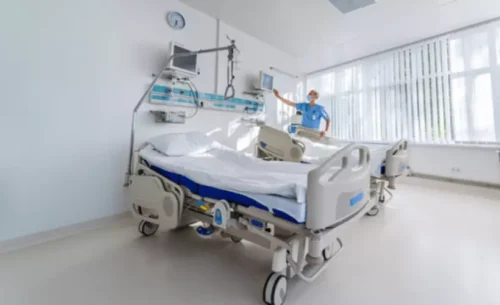
HITAP’s international work is supported by the how to do an intervention for an alcoholic International Decision Support Initiative (iDSI), with the aim of providing technical assistance on health intervention and technology assessment to governments in low-income and middle-income countries. IDSI is funded by the Bill & Melinda Gates Foundation (OPP ), the UK’s Department for International Development, and the Rockefeller Foundation. HITAP is also supported by the Access and Delivery Partnership, which is hosted by the United Nations Development Programme and funded by the Government of Japan.
- Your health care provider can help you evaluate the pros and cons of each treatment setting.
- Cognitive impairment can lead to an increased likelihood of falls 7 and because older people often have weaker bones, this can lead to hip fractures, which is one of the highest causes of death in the older population 8.
- In addition, other studies found lower rates of heavy episodic drinking and visits to physicians and emergency departments 17 a lower frequency of “binge drinking” episodes and frequency of excessive drinking 22 and harmful and hazardous drinking 18.
Comparison against clinical practice guidelines

One of the remaining interventions was not significant in lowering BD, but it was significant in lowering heavy marijuana users’ alcohol intake (Yurasek et al., 2017). The theoretical frameworks that produced significant changes were the theory of planned behavior, social cognitive theory, self-affirmation and implementation intentions. As suggested earlier, the use of fourth-generation MTMs can be used to enhance the effect sizes of future interventions (Sharma et al., 2022).
Products and Services
Gordon et al. 19 suggest that there is a need for changes when measuring consumption and more reliable ways of reporting, as all reviewed studies relied on self-reporting which can lead to “conservative estimates of consumption” 18. Six of the seven studies included used some form of https://ecosoberhouse.com/ blinding outcomes, which adds to the validity of results. However Hansen et al. 23 did not use any blinding in their groups, declaring it unfeasible and Fink et al., 18 provide limited information on blinding. Fink et al. also admit that physicians in their three groups may have discussed the process, however they have no evidence that this did occur; this is a weakness of both included studies.
National Institute on Alcohol Abuse and Alcoholism (NIAAA)

Overall, the aforementioned strategies highlight the more widespread adoption of community-level interventions that support environmental strategies as approaches to address underage drinking in research and practice. Throughout history, researchers and healthcare professionals have dedicated their efforts to understanding and addressing the harmful consequences of binge drinking. By conducting rigorous scientific studies, they have uncovered valuable research findings on intervention efficacy, which provide insights into effective approaches for reducing problematic behaviors. These findings highlight the importance of evidence-based interventions in addressing binge drinking.
- Following the screening, brief interventions should be provided to offer personalized feedback, discuss health impacts, and offer support for behavior change.
- If you’d like to chat with someone today about treatment, AAC’s admissions navigators are available 24/7 to discuss your options today.
- Another important aspect is promoting and creating alcohol-free environments where people can socialize and have fun without feeling pressured to drink excessively.
- Scientists are working to develop a larger menu of pharmaceutical treatments that could be tailored to individual needs.
- From the review, 29 studies were identified for screening, brief intervention and referral to treatment and 1 network meta-analysis considered the impact of brief intervention combined with other interventions (Tables 3 and 4).
The umbrella review found non-inferiority of digital interventions, but this was not discussed in any of the CPGs. A summary of results from the umbrella review are presented in Table Table12.12. For screening, brief interventions and referral to treatment, the NICE clinical practice guidelines (CPG) recommend that all individuals identified with harmful drinking or dependence receive motivational interviewing 24. Whilst our review found motivational interviewing (and brief motivational interviewing) to be effective, we identified a greater level of variation than for brief counselling or general brief interventions, and no evidence to support delivery of motivational interviews to those with alcohol dependence. However, it should be noted that findings from our review considered motivational interviewing delivered independently, not at the start of treatment initiation as with the NICE CPG. Among military and veterans, web-based brief interventions showed no reduction in self-reported alcohol consumption at 6–20 months (WMD 1.81, 95% CI -0.06 to 3.68) but there was a significant reduction in deaths at 6 months and 12 months (RR 0.60, 95% CI 0.40 to 0.91, 12 months) 36.
Reach out now and join our supportive
Effective strategies identified in high-income countries can serve as models for adaptation in low- and middle-income countries, provided they are culturally sensitive and contextually relevant (McGregor et al., 2014). This research can facilitate knowledge transfer and help bridge the gap between diverse regions. A systematic review allows for a comprehensive comparison of interventions across high-income countries. By identifying differences in effectiveness, cultural sensitivity and potential biases, this study sheds light on the nuances of addressing BD in various settings. Policymakers and researchers worldwide can benefit from the insights provided by such comparative analyses. This may explain the reason why we identified very few eligible studies for many types of psychosocial intervention.

NICE explicitly recommends against the use of GHB or antidepressants, including SSRIs. While the umbrella review showed good effectiveness of acamprosate, we found no outcomes for acamprosate delivered in combination with psychosocial interventions. Moreover, our review found conflicting evidence to support the use of naltrexone and suggested that GHB merits further research and review. One study was identified for family-oriented approaches, which reported on measures of alcohol use among school-aged children following family-based prevention programmes, administered to either the children themselves or to family members 42. There was no significant effect across prevalence of alcohol use (SMD -0.16, 95% CI -0.36 to 0.05), volume of alcohol use (SMD 0.06, 95% CI -0.15 to 0.27), or frequency of alcohol use (SMD -0.65, 95% CI -1.64 to 0.33).
- You want to give your loved one a chance to safely talk about why they’re drinking.
- Only those indicators were extracted with selectively existent behaviors that were considered statistically significant for the results that aligned with research questions and interests.
- Furthermore, the majority of the studies did not undertake process evaluations.
College-based programming
In these studies, CBT has been shown most effective when compared with having no other treatment at all. When compared with other treatment approaches, studies have had mixed results. Some show CBT to be more effective, while others show it to be of equal, but not greater, effectiveness than other treatments. Cognitive behavioral treatments are one of the most frequently evaluated psychosocial approaches to treating substance use disorders. We’ve tried, tested, and written unbiased reviews of the best online therapy programs including Talkspace, BetterHelp, and ReGain. Research suggests that the skills obtained through CBT are enduring and can also be applied in other areas of an individual’s life as well.
Another positive effect of the intervention is the reduction in alcohol‐related negative consequences, such as harm to third parties or unprotected sex. Up to 12% of university students claimed to have been beaten or assaulted by another student who had maintained a risky alcohol consumption pattern (Hingson et al., 2009; National Institute on Alcohol Abuse and Alcoholism, 2020). Therefore, offering this type of intervention to reduce risky alcohol consumption in undergraduates is paramount. Because of time pressures, it is practical for primary care professionals to use a brief screener that asks about heavy drinking days, then to ask follow-up questions as needed. Such e-health tools have been shown to help people overcome alcohol problems.